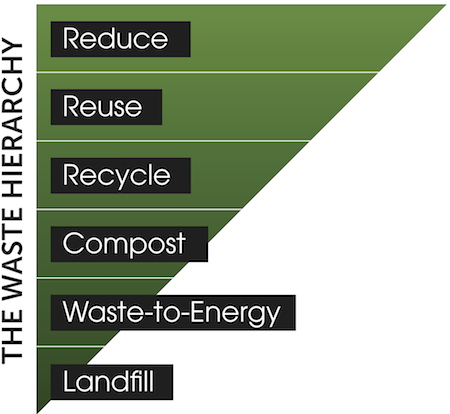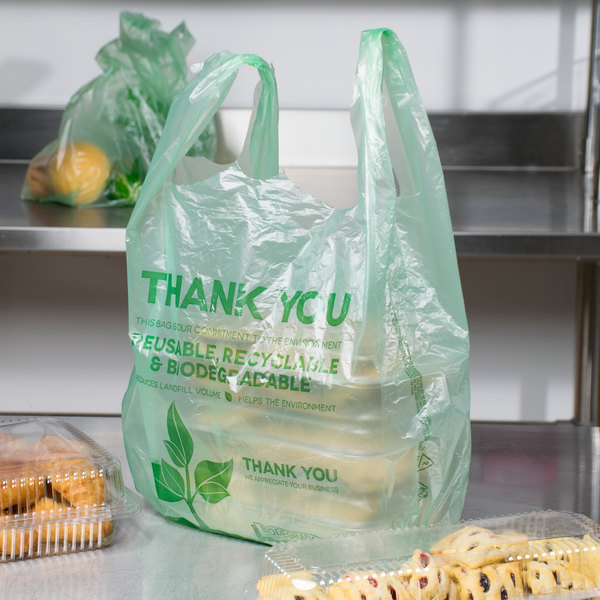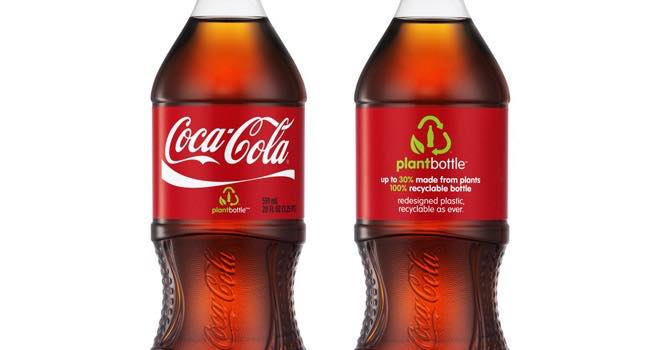Bioplastic is Not Plastic Free
Some companies looking to move to Plastic-Free Packaging consider biodegradable plastic as one possible solution. However, bioplastic is plastic. This does not mean that certain types of bioplastic shouldn't be considered as part of an eco-friendly packaging strategy. However, it does mean that biodegradable plastic is not a silver bullet solution for you if you are choosing to go “Plastic-Free.”
In fact, some biodegradable plastic packaging solutions are actually extremely problematic, and are worse for the environment than traditional plastic.
Additionally, if you were hoping to go plastic free, but have found it impossible to avoid plastic in some element of your packaging, recycled, recyclable plastic is often ecologically superior to bioplastic.
In this article, we break down different types of biodegradable plastic and bioplastic, and summarize the upsides and downsides of the material as a sustainable packaging alternative. If you determine that a biodegradable plastic is best for you, we share guidance to help you select the right type of bioplastic material for the planet. We also share a few tips to help you market your bioplastic packaging accurately to your customers in ways that avoid greenwashing and support responsible disposal.
WHAT IS BIOPLASTIC
Bioplastic is plastic that is made (at least in part) by plants or fibers AND/OR is biodegradable in some way. The term "bioplastic" refers to a diverse set of materials, including:
- Plastic derived in-part or fully from plants or other rapidly renewable materials. This type of plastic can be certified compostable, recyclable with traditional plastic, or only suitable for the landfill.
- Plastic derived from petroleum that are certified as industrial or home compostable
- Plastics derived from petroleum that are labeled "biodegradable" (but are not certified compostable)
THE UPSIDES OF BIOPLASTIC
Plant-Derived: Bioplastic can be plant-derived, and plants are a renewable resource. Today, most plant-based bioplastic comes from corn or sugarcane. It should be noted that many self-proclaimed plant-derived bioplastic solutions are only derived in-part from plants (the rest is petroleum based). Additionally, some bioplastics are actually derived entirely from fossil fuels with enzymes added to accelerate degradation. It is also important to remember that while corn and sugarcane are renewable resources, they do require fossil-fuel intensive agriculture that is polluting to water and soil. Bio-based plastic is also typically controlled by behemoth agricultural and chemical companies (often the very companies that are driving GMO seed development).
Compostability: Some bioplastic is compostable in industrial composting facilities, where temperature and timing are closely managed. While recycling is the preferred outcome for most packaging, composting is preferred to landfill or litter. For food product packaging in particular, compostable solutions are an an exciting innovation because this allows consumers to compost the package AND the food remnants in the packaging (allowing food to end up in a compost pile instead of the landfill).
A small set of bioplastic is home compostable. This is great because it means (1) the plastic can biodegrade in conditions that are not as strict and (2) it can be composted by households with a home compost setup even if they don’t have access to industrial compost. Note that most bioplastic labeled home compostable plastic is derived only in-part by plants (0-50% plant based) with the remainder made with petroleum-based plastic.
THE DOWNSIDES OF BIOPLASTIC
Does Not Address Marine Plastic Pollution: Most commercially available bioplastic does not rapidly biodegrade in the oceans! Typically, if bioplastic ends up in the ocean, it will behave like traditional plastic. People moving to bioplastic as a way to positively influence our marine plastic pollution crisis are often surprised to learn this. If a material is not marine biodegradable certified, assume it will not breakdown in the ocean.
Additionally, there are quite a few options out there labeled as "biodegradable plastic" that are actually oxo-biodegradable, meaning that they rapidly degrade into smaller bits of plastic when exposed to the sun. These oxo-biodegradable plastics are often considered more damaging to the oceans than traditional plastic, because they exacerbate the issue of micro-plastics. Read the Sustainable Packaging Coalitions view on this topic to learn more.
There is exciting emerging research and development of bioplastic formulations that are, in fact, certified to biodegrade in marine environments. We hope these are developed into materials used for straws, cup lids and grocery bags, which are the top items found in oceans. Even as this technology develops, we don’t think it should be used for ecommerce packaging, which brings us to our next point.
Recycling is preferred to composting: With the exception of food packaging, composting is not necessarily the ideal end of life solution for packaging.

Recycling is preferred to composting in the hierarchy of waste management (reduce -> reuse -> recycle -> compost -> landfill -> litter). If recycling is preferred to composting, then a packaging solution designed to be recycled is preferred to one that is designed for composting. The majority of bioplastic packaging options out there today are not recyclable.
Contamination: There's an abundance of confusion surrounding how to properly dispose of plastic as bioplastic almost always contaminates the waste stream.
- Many people think that compostable plastic just "goes away" in the landfill, so they toss it in the garbage. That is not true. Most bioplastic will sit in a modern landfill for as long as traditional plastic will (depending on the conditions of the landfill).
- Others think bioplastic is recyclable and toss it in their blue bin (or drop off at their grocery store plastic film drop off) where it contaminates bales of recycled materials, damaging the economics of the recycling supply chain.
- Many products labeled as "biodegradable plastic" are neither compostable nor recyclable, and must be landfill bound. Consumers try to compost these items because of the mislabeling, which leads to the contamination of industrial and home compost bins.
- Finally, even certified compostable packaging will typically bring contaminates to a compost facility. Many companies using certified compostable packaging add labels and stickers to that packaging (which aren't fully compostable). Using compostable plastic as a shipping solution is tough because the vast majority of shipping labels are non-compostable. Unless customers are cutting the label out of the bag, it will bring plastic and other non-organic residue to the compost bin.
Poor compost quality: Even when a package is truly and fully compostable, the quality of compost degrades with too much bioplastic. This isn’t a huge deal right now since compostable bioplastic is still relatively limited in use. But imagine a world if all plastic was replaced by compostable bioplastic and all of it were composted. The resulting compost would not be usable for certified organic or sustainable farming. It would lead to compost that isn't great for our soils, and composting facilities will have a much harder time finding buyers for their output (making the entire economics of the compost business more difficult for municipalities to manage). This is one reason why the vast majority of municipal industrial composting operations nationwide still do not accept compostable bioplastics.
Linear economy mindset: Most bioplastic solutions are designed with a linear economy thought process. They are made with virgin materials, used once, and then the material is meant to be disposed of (ideally composted if the bioplastic is compostable). Within the linear economy mindset, bioplastic is often superior to petroleum counterparts. EcoEnclose supports the circular economy, in which materials and packages are designed for recyclability and products are manufactured with as much recycled content as possible. This type of approach has a lower carbon footprint, maximizes the value of natural resources, and spurs innovation within recycling and the use of recycled materials in end products. All things equal, we support investments in improved recyclability (i.e. for example, R&D that allows us to create plastic film that uses 100% post-consumer waste) versus investments in finding new, more sustainable ways to make virgin plastic (though we recognize that both are important).
THE UGLY SIDE OF BIOPLASTIC
The biggest downside of bioplastic is the misleading marketing and messaging around it.
Bioplastic packaging is often accompanied by the messaging: "plant bottle" or "vegetable bag" or "this packaging is made of dirt." It is common to see bags shaded in green that claim to be both recyclable and biodegradable (which, if you see it, is likely inaccurate labeling).
Imagery and language like this, while generally well-intentioned, is often inaccurate and is very misleading to consumers.
For example, this bag claims to be recyclable #2 plastic as well as also biodegradable.

A quick glance at it would suggest it is made of plants and compostable. More than likely, neither of these things are true. In fact, it's more likely that the bag is a traditional plastic bag with additives to make it "oxo-biodegradable." Try to find truly recycled and recyclable paper shopping bags instead.
Messaging like "Plant Bottle" or "This Bag is Made of Dirt" would suggest that a package is 100% made of plants, which is often not the case. For example, Coca-Cola’s Plant Bottle is typically 30% sugarcane-based plastic (the remainder is traditional fossil fuel based plastic), but most people would assume a package called the "plant bottle" is entirely made of plants instead of the reality: the Coca-Cola Plant Bottle is only made partially from plants.

Sexy messaging around bioplastic is problematic. It paints bioplastics as a silver bullet solution. It suggests to consumers that their packaging is essentially a plant or dirt, and will dissolve back into the earth the same way a piece or paper or apple would.
But bioplastic is chemically different from the original “plant” that it was derived from. PLA (polylactic acid), for example, is made by adding enzymes to the endosperm of corn, which creates dextrose that is fermented into lactic acid, that is then converted to pellets of polylactic acid plastic. This is not a natural process, and the resulting material behaves nothing like the corn originally used to derive the lactic acid. This is why an organic farm can accept compost made with food waste but not compost that contains bioplastic.
This type of marketing makes people think that solving the "plastic problem" is easy, and it limit investments in the plastic recycling technology that is essential to a truly circular economy.
We believe bioplastic has an important place in the future of sustainable packaging, especially as it relates to food packaging. However, as with all aspects of sustainability, we also believe accurate, authentic, honest messaging is critical.
So, should I use bioplastic for my ecommerce packaging?
If you've made the decision that your company wants to be Plastic-Free, we strongly recommend packaging solutions that are made with naturally biodegradable materials such as paper.
If you have found the functionality of plastic to be essential to your shipping and operations, than we'd recommend you consider recycled, recyclable plastic instead. In fact, some forward thinking companies like Patagonia actually see bioplastic as so problematic that they restrict in their packaging (as based on their merchandising policy).
To date, we at EcoEnclose have made the decision not to offer bioplastic packaging solutions for the reasons outlined above. We recommend that companies seeking to go plastic-free look for packaging made with paper. If the characteristics of plastic are critical for your business, we continue to see recycled plastic as the best solution. We do, however, look forward to seeing legitimate advances made in bioplastic technology that result in a material that is truly a sustainable alternative to recycled plastic.
That said, we recognize that for some companies, the upsides of bioplastic is worth the downsides. If that is true for your brand, read on for some tips to help you select the right bioplastic solution packaging for your business.
Guidelines for using any bioplastic packaging solutions for ecommerce
- Avoid "biodegradable plastic" that is not certified as compostable or is not derived entirely from plants: If you see a very inexpensive plastic packaging solution that claims to be biodegradable and recyclable, but is not certified as compostable, chances are that it is some version of oxo-biodegradable virgin plastic. Avoid these at all costs! They contaminate the recycling stream, are extremely misleading to customers who may try to compost them, and - if they were to end up as ocean pollution - are actually more problematic than traditional plastic.
- Look for plant-based plastics that are recyclable (rather than compostable, or "biodegradable"): A very small percentage of US households have access to industrial composting that will accept compostable plastic. Most of us have access to plastic recycling (either curbside or grocery drop offs). Bio-PET (the type of bioplastic that is in Coca-Cola's Plant Bottle) is one example of a recyclable plant-based plastic. Even though the bio-PET in the bottle is derived from sugarcane, it behaves exactly like petroleum-based PET. Because of this, the bottle can be recycled along with all other PET bottles. This type of recyclable bioplastic is a truly exciting alternative to virgin, petroleum-based plastic because it is designed for a circular economy and encourages continued investment in recycling infrastructure and technology.
- Be honest and transparent: If your packaging is made of a percentage of plant-derived plastic, avoid marketing it as a "Plant Package" or a "Package that is Made of Dirt" or anything else that is misleading and may be perceived as green washing. Instead, be clear that X% of the plastic package is made from plants. Avoid language or imagery that implies that the package is harmless to the ocean or will dissolve in the landfill. Accurate, transparent messaging is a critical foundation to any sustainable packaging strategy.
- Be extremely clear on how to dispose of the package: We strongly encourage you to avoid using the term "biodegradable" when it comes to plastic, as the term is often misused and misunderstood. If your packaging is recyclable, be very clear on how to recycle (i.e. along with other like plastics, in a grocery drop off, curbside, in a special stream, etc). If your packaging is industrial compostable, let them know how to find a facility. If your packaging is home compostable, let them know what that means (as even home compostable plastic requires fairly specific conditions). If your bioplastic packaging is neither recyclable nor certified compostable, advise your customers to landfill it when complete.
Have additional questions about plastic-free packaging? Please feel free to contact us and we'll gladly help you find the right solution for your brand.

